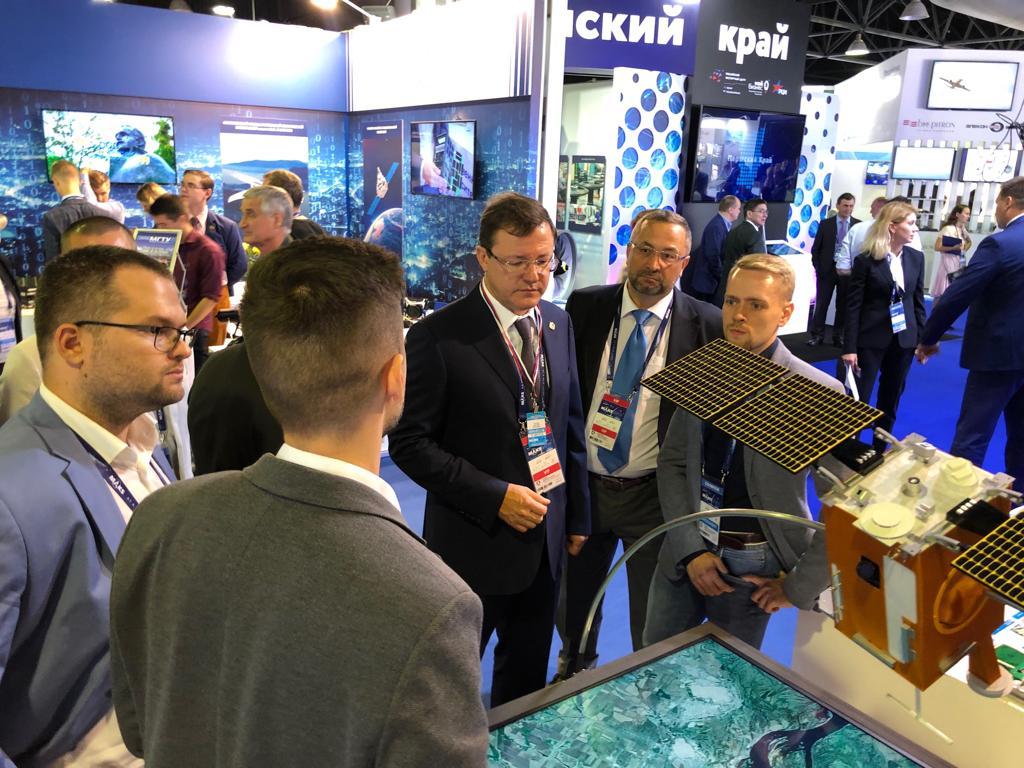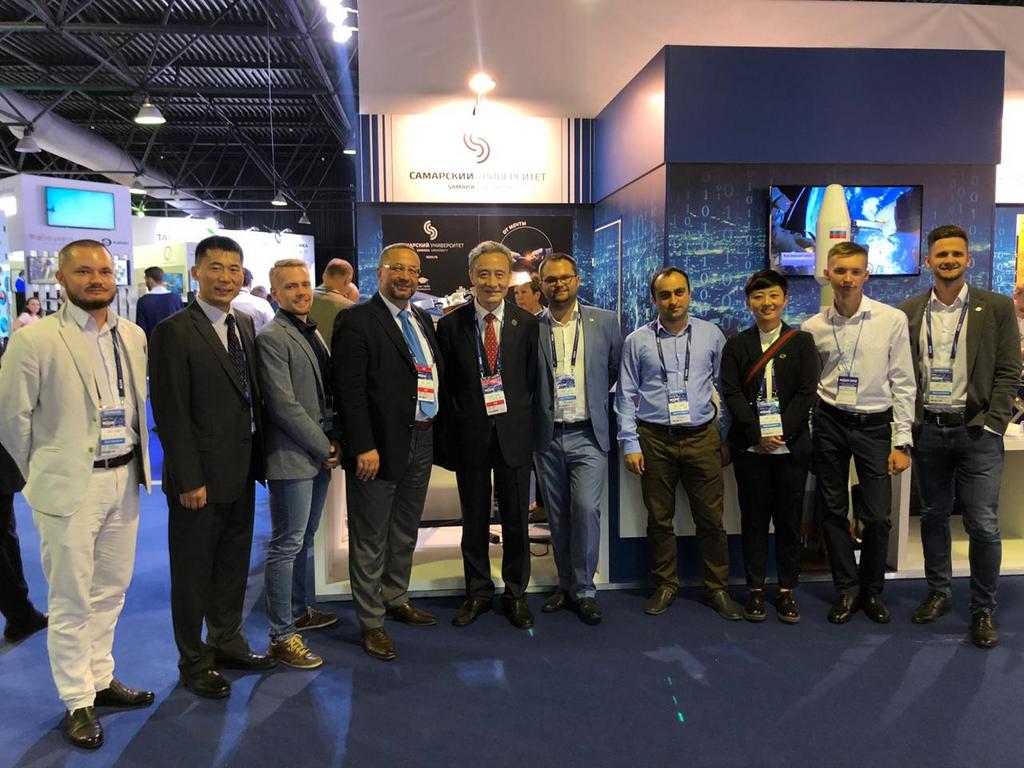On Tuesday, August 27, the XIV International Aviation and Space Salon was launched in the Zhukovsky urban district. Samara University traditionally takes part in one of the world's largest aviation forums and along with other domestic leading companies in the field of aviation and astronautics presents advanced innovative developments of its leading research and engineering centres.
Among them there is “AIST-3” model of a small spacecraft for the Earth remote sensing (ERS). Its functionality attracted the attention of Governor of the Samara Region Dmitry Azarov, as well as the representatives of the Northwestern Polytechnical University of China.
The spacecraft continues the line of the AIST family small spacecrafts, created in collaboration with Samara University scientists and JSC SRC “Progress” engineers.
“AIST-3” small spacecraft makes it possible to receive images of medium spatial resolution in the visible, near infrared spectral ranges with a resolution of at least 5 metres, with a capturing bandwidth of 60 km, to monitor water transport, to control location and in addition, "AIST-3" is capable of identifying subsurface, sheltered and vegetation masked objects, as well as to monitor water transport, to control the location and parameters of ships.
The Governor of the Samara Region also praised the wide opportunities for the use of “Indigo” unmanned aerial vehicle (UAV) in the field of ecology. It is designed to conduct the detailed monitoring of the state of complex energy, hydraulic and industrial facilities.
A portable gas chromatograph can be installed on the UAV, which carries out operational monitoring of the chemical composition of the atmosphere in the immediate vicinity of the damage centre.
In addition, the exhibition presents the units and parts of aircraft gas turbine engines obtained by using 3D printing technology, including: a combustion chamber burner, a burner housing, a stand for a high pressure turbine, a single-stage or two-stage nozzle apparatus. The use of selective laser melting methods has significantly reduced manufacturing time and production costs.
The demonstrator installation of the vibration isolation system based on the metal rubber (MR) material shows how resistant the MR material is to the impact loads. Initially, a unique material combining metal strength and rubber elasticity was developed in order to be used in space. It helps to suppress the overloads affecting sensitive equipment, when the satellites are put into orbit. Now MR is widely used in the Earth industry. Metal rubber is used to increase the vibrational reliability of parts and systems of various products in engine building, mechanical engineering, machine tool building, shipbuilding, energy, radio electronic, oil, gas and food industries, in defense equipment and medicine, it is also actively used for the needs of Russian Railways.
Within the framework of MAKS-2019 a number of events are also taking place in which Samara University scientists and engineers take an active part. Among them there is the Third Eurasian Aerospace Congress; International Youth Forum “The Future of Aviation and Astronautics Belongs to the Young Russia”; solemn meeting dedicated to the strategic development program "Smart University – Smart Mover"; round table "Unmanned Aircraft Systems in Solving Transport Problems: Market Expectations and Technological Capabilities"; a round table dedicated to the 130th anniversary of the birth of Igor Ivanovich Sikorsky, an outstanding designer, the Russian genius of world aviation, the inventor of the world's first four-engined aircraft and a forum dedicated to additive technologies.
Head of "Aerospace Engineering and Technology" Scientific and Research Centre, Associate Professor of Samara University Space Engineering Department Ivan Tkachenko will share his experience in developing and operating of small spacecraft "AIST" in his open lecture.
Participation in the International Aviation and Space Salon allows Samara University to develop cooperative ties, conclude profitable deals and agree on further mutually beneficial joint projects with Russian and foreign developers and manufacturers of aerospace equipment, foster cooperation with other leading scientific and educational centres.
 RU
RU  EN
EN  CN
CN  ES
ES 
.jpg)

